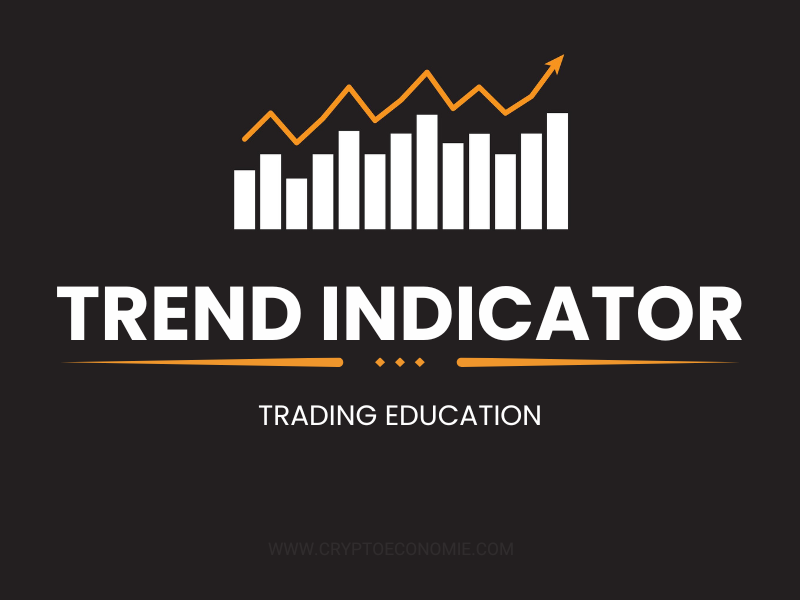what is Trend Indicators in Trading: A Friendly Guide

Unlock the secrets of trend indicators in trading. Understand market trends and improve your strategies. Dive into our easy guide now!
When we dive into the world of trading, it’s easy to feel overwhelmed by the sheer volume of information and tools available to us. One term we often hear is "trend indicator," and understanding what it means can significantly impact our trading strategy.
So, let’s embark on this journey together as we unravel the concept of trend indicators, how they work, their various types, and their pros and cons.
A trend indicator is a tool used in technical analysis to help identify the overall direction of market movements—whether it's an uptrend, downtrend, or neutral. These indicators are particularly valuable for traders looking to align their strategies with the prevailing market direction. In trend trading, the goal is to profit by analyzing the movement of an asset in a specific direction.
While no single trend indicator can guarantee success in the Forex and crypto market, they remain among the most favored tools for trend traders. Some of the top trend indicators include the Moving Average, MACD, Relative Strength Index, Average Directional Index, Ichimoku Cloud, and Parabolic SAR. Join us as we delve into the most effective trend indicators.
What is a Trend Indicator in Trading?
A trend indicator is a tool used in technical analysis to identify the direction of market movement (trend). These indicators help traders determine whether the market is moving in an uptrend, downtrend, or neutral trend. The main purpose of these indicators is to identify the trend and help in making decisions to buy or sell.
Trend detection indicators provide an objective measure of trend direction. They are especially useful when screening to identify breakouts or continuations of trends.Traders often mistake corrections for trend reversals and exit trades too early. Other times, they may hold their positions open for too long and miss out on some potential profits. Using trend detection indicators helps traders reduce uncertainty, save time, and reduce stress.
For example, if we are trading a particular stock and notice a consistent upward movement in its price, a trend indicator can confirm that this upward trend is likely to continue. This provides us with the confidence to enter or exit trades based on observable patterns.
How Does a Trend Indicator Work?
The operation of trend indicators is based on historical price data, which they analyze to forecast future movements. They can utilize various algorithms and calculations to smooth out price fluctuations, thereby providing a clearer picture of the prevailing trend.
For instance, let’s say we’re examining a moving average trend indicator. This tool takes the average price of a stock over a specified period—like 20 days—and displays it as a line on a chart. When the price consistently stays above this line, it indicates a bullish trend, while staying below may signal a bearish trend.
Here’s how we can break down the functionality:
Data Collection: The indicator collects historical price data over a specific timeframe.
Calculation: It applies mathematical formulas to this data to identify patterns and trends.
Visualization: The results are displayed visually on charts, making it easier for us to interpret the data.
Types of Trend Indicators in Trading
Now that we understand what trend indicators are and how they work, let’s explore some of the most popular types. Here’s a list of common trend indicators we might encounter:
1. Moving Averages:
Simple Moving Average (SMA) Exponential Moving Average (EMA)
2. Relative Strength Index (RSI):
Measures the speed and change of price movements, indicating overbought or oversold conditions.
3. Average Directional Index (ADX):
Indicates the strength of a trend rather than its direction.
4. Bollinger Bands:
A combination of moving averages and standard deviations to identify volatility and trends.
5. MACD (Moving Average Convergence Divergence):
Shows the relationship between two moving averages of a security’s price.
Each of these indicators has unique features that can suit different trading styles and preferences.
Pros and Cons of Trend Indicators
Like any tool in our trading arsenal, trend indicators have their advantages and disadvantages. Here’s a breakdown to help us weigh the benefits against the drawbacks.
Pros
Clear Visual Representation: Trend indicators provide an easily interpretable visual representation of price movements.
Trend Confirmation: They help confirm trends, allowing us to make more informed trading decisions.
Identifying Entry and Exit Points: Trend indicators can signal optimal times to enter or exit trades, enhancing our trading strategy.
Automation and Backtesting: Many trend indicators can be automated, making it easier to test strategies against historical data.
Cons
Lagging Nature: Most trend indicators are lagging, meaning they may provide signals after a trend has already begun, potentially causing missed opportunities.
False Signals: In choppy or sideways markets, trend indicators can produce false signals, leading us to make poor decisions.
Over-reliance: Relying too heavily on these indicators without considering other factors can be detrimental to our trading success.
Complexity: Some indicators may be complex and require a deeper understanding of technical analysis, which can be daunting for beginners.
FAQs
Q1: What is the best trend indicator for beginners?
A1: For beginners, we recommend starting with Simple Moving Averages (SMA) due to their straightforward calculation and interpretation.
Q2: Can trend indicators work in all markets?
A2: Yes, trend indicators can be applied across different markets, including stocks, forex, and commodities, though their effectiveness may vary depending on market conditions.
Q3: How can I avoid false signals from trend indicators?
A3: We can reduce the chances of false signals by combining trend indicators with other analytical tools, such as support and resistance levels, and considering market news.
Q4: Are there any free trend indicator tools available?
A4: Absolutely! Many trading platforms, such as TradingView and MetaTrader, offer free trend indicators and charting tools for traders of all levels.
By equipping ourselves with the knowledge and tools to understand trend indicators, we can take a significant step forward in our trading endeavors. Happy trading!
Conclusion
In our exploration of trend indicators in trading, we’ve uncovered their essential role in identifying market movements and assisting in decision-making. By understanding how they work, their types, and their pros and cons, we can integrate them into our trading strategies more effectively.
As we continue our trading journey, let’s remember that no single tool or indicator can guarantee success. It’s crucial to combine trend indicators with other analytical methods and a solid risk management strategy. With the right approach, we can harness the power of trend indicators to help us navigate the complexities of the trading landscape.
Related News


Add a Comment
Please login to your account to post a comment.
Popular News
A Golden year for gold Could Bitcoin reach new price highs following gold lead?
2024-09-27 07:39:00
Meta $4.5 billion loss in the last 3 months. Metaverse bubble destruction domino activated?
2024-08-02 13:44:00
Important tips for the successful entry of inexperienced people into digital currencies
2024-03-14 10:32:00
TonKeeper Wallet Tutorial
comprehensive coinbase exchange review











cryptoeconomie is an independent media outlet covering the cryptocurrency industry. Its journalists adhere to a strict set of editorial policies. cryptoeconomie has adopted a set of principles aimed at ensuring the integrity, editorial independence and freedom from bias of its publications. cryptoeconomie provides essential analysis of the cryptocurrency market. Our goal is to inform, educate and share valuable information with our readers. Our editorial content is based on our passion for providing unbiased news, in-depth analysis, comprehensive cryptocurrency price charts, insightful opinions, as well as regular reporting on the social transformation that cryptocurrencies are bringing. We believe that the world of blockchain and cryptocurrencies will grow exponentially and become an integral part of our daily lives. We work every day to help educate our readers and raise awareness of the complexities and benefits offered by today’s digital revolution.
Categories
- NFT
- Defi
- Metaverse
- News
- Web3
- Crypto Exchanges News
- Stablecoins
- Altcoins
- Bitcoin
- Technologi
- Artificial Intelligence
- Crypto Learning
- Crypto Glossary
- Crypto Exchanges Training
- Ethereum
- Solana
- Regulation
- Crypto Reviews
- Centralized Exchanges
- Decentralized Exchanges
- Crypto Wallet
- Crypto Investment Training
- Trading Education
- Crypto Projects
© Copyright 2025 cryptoeconomie.com . Design by: uiCookies

























Comments